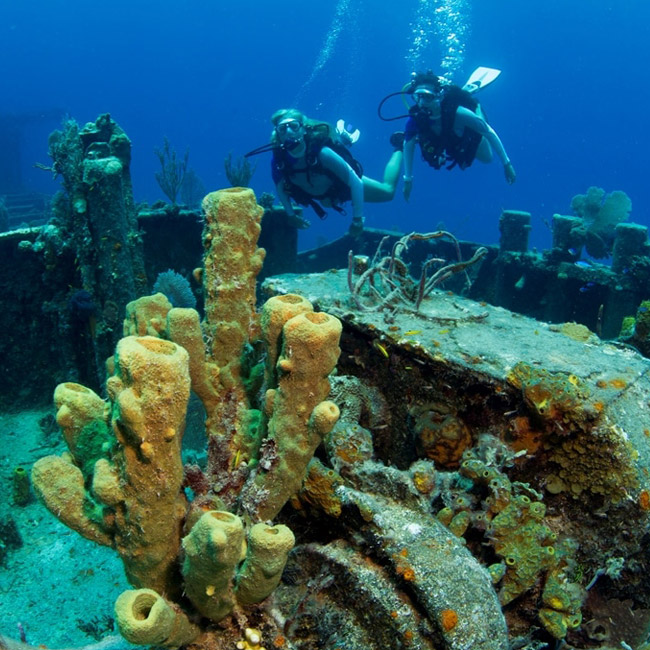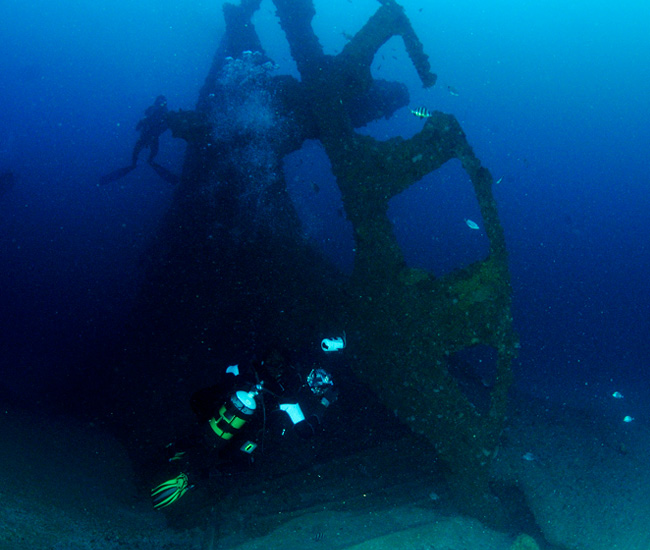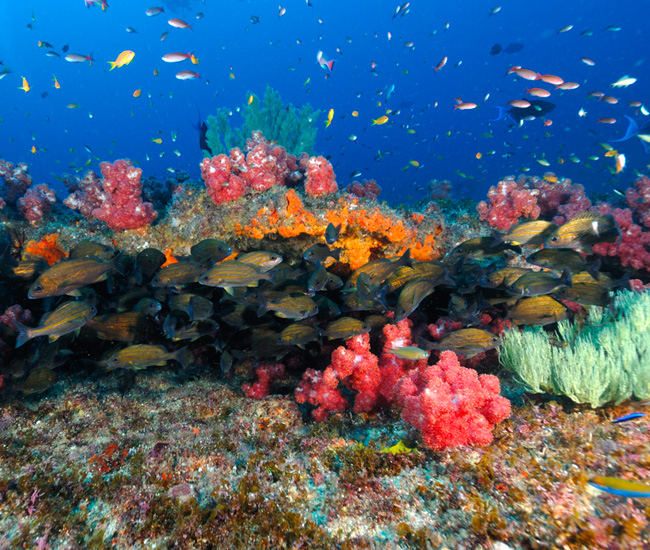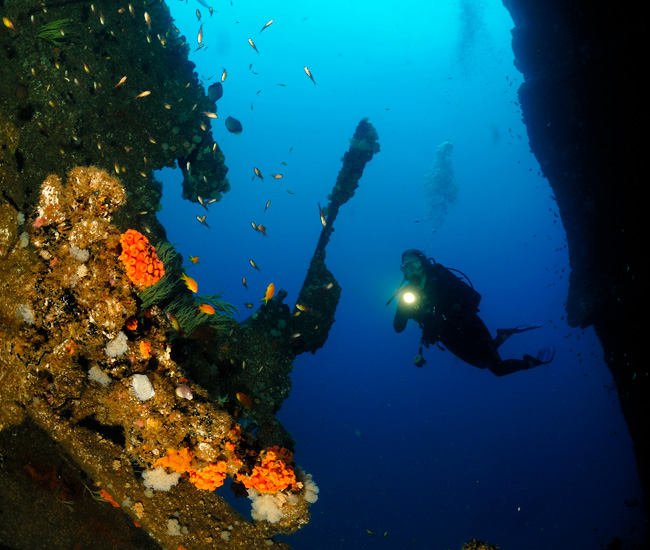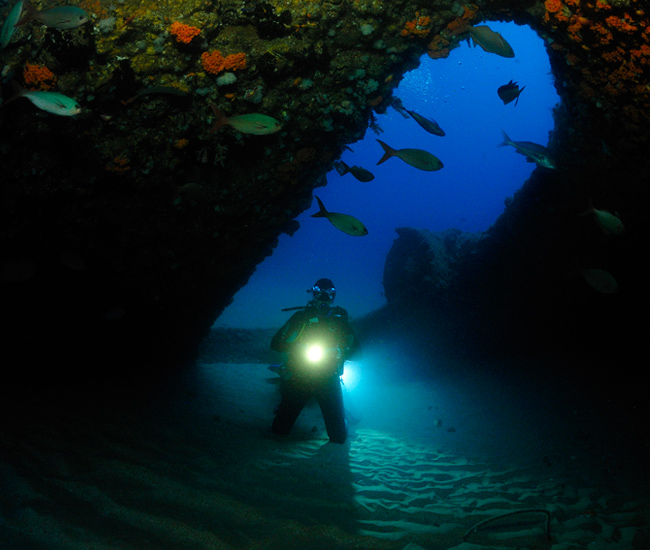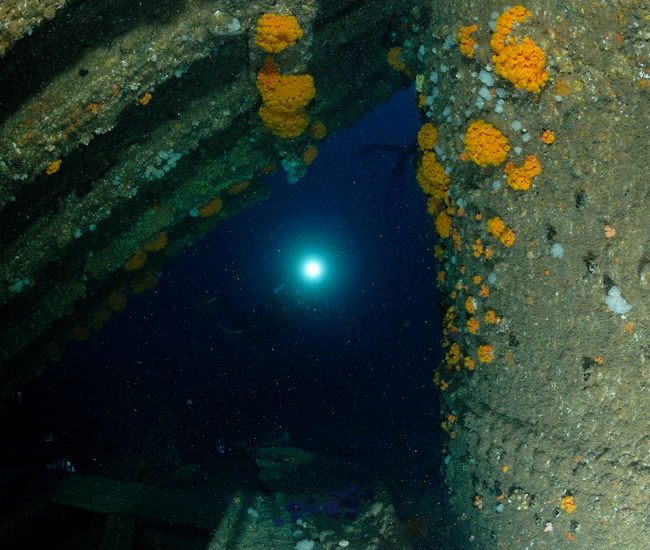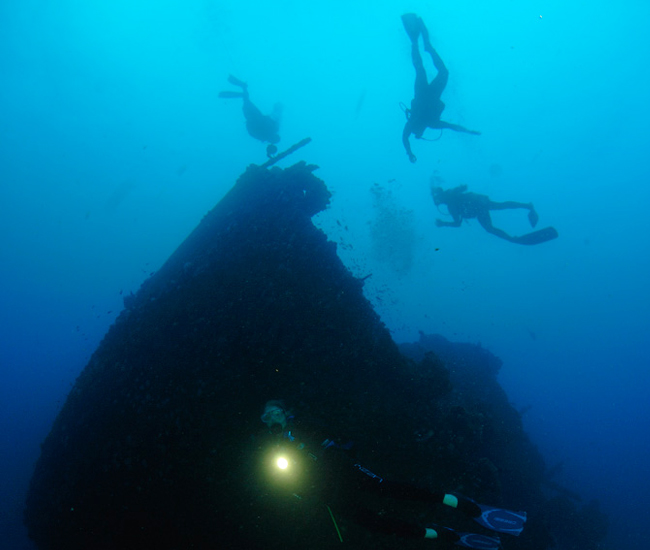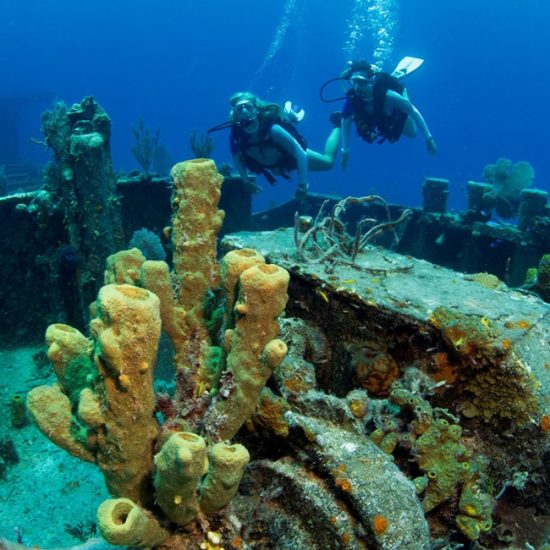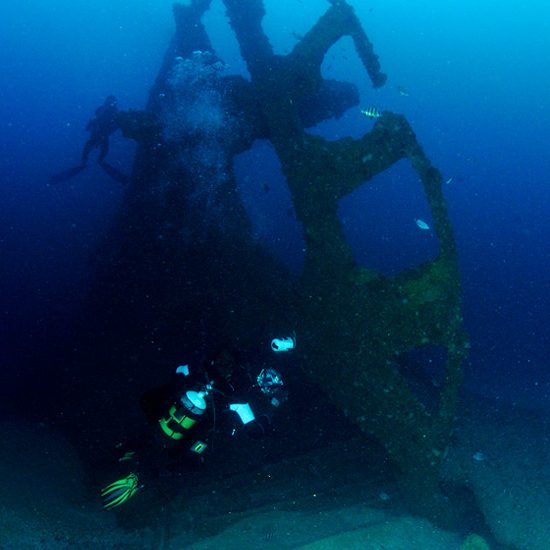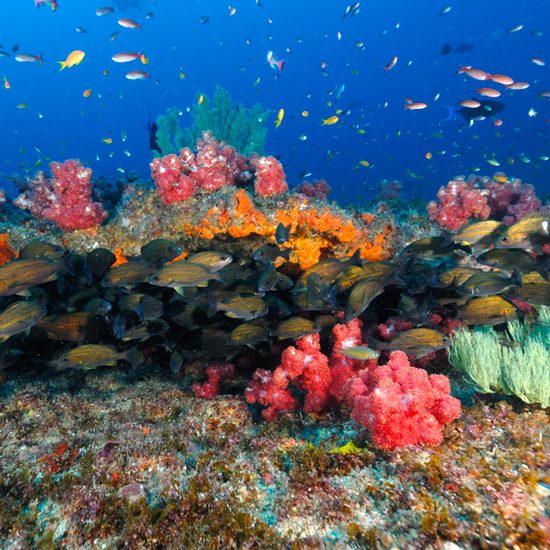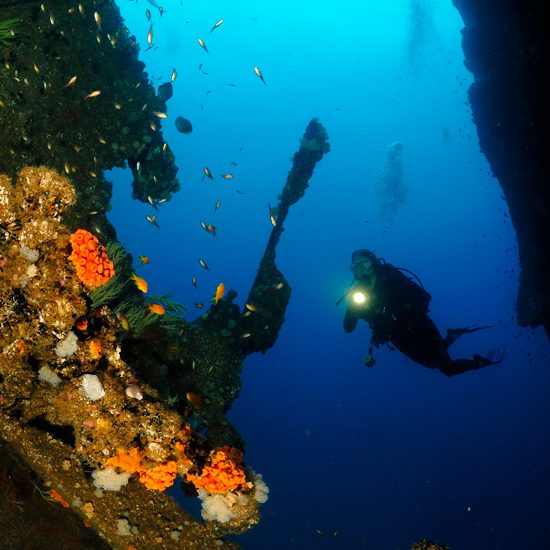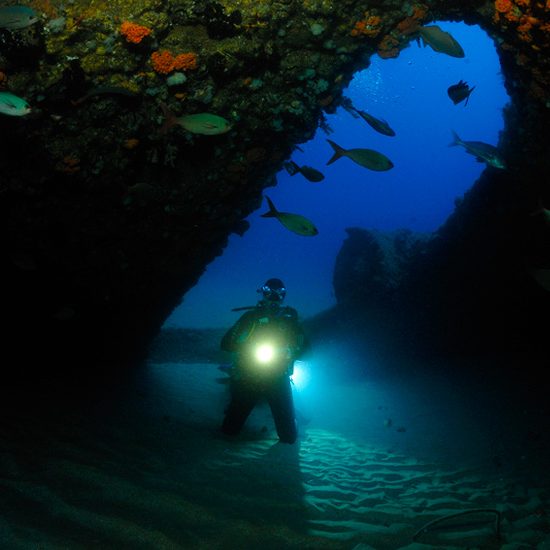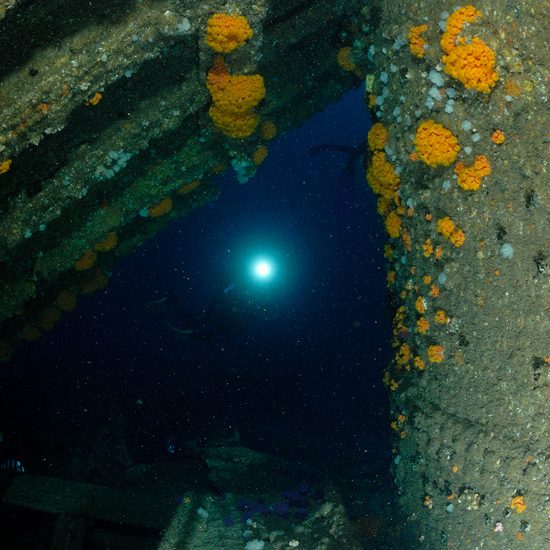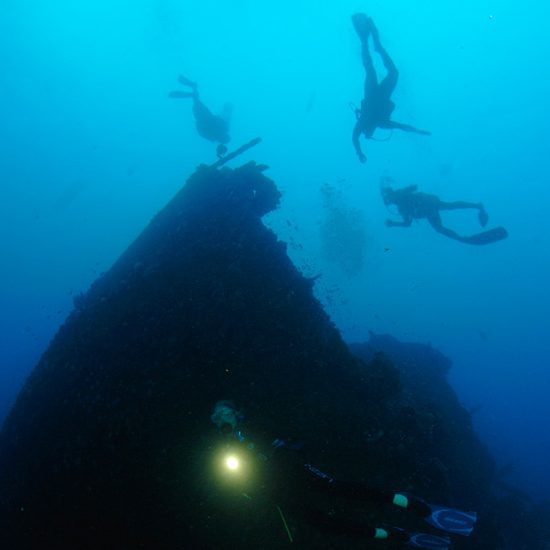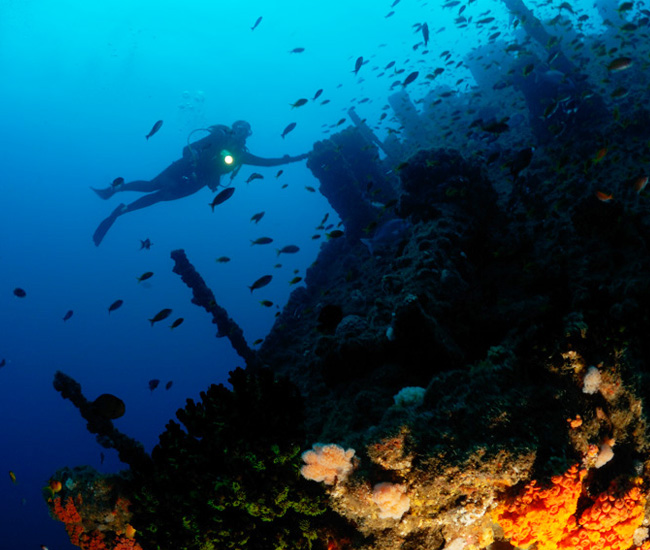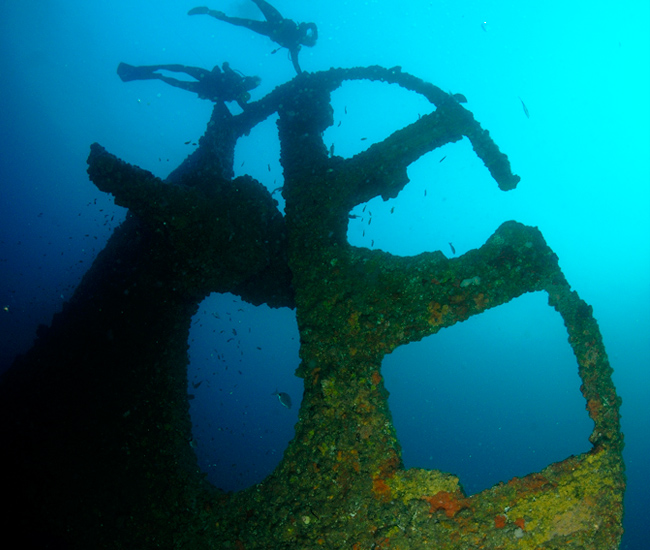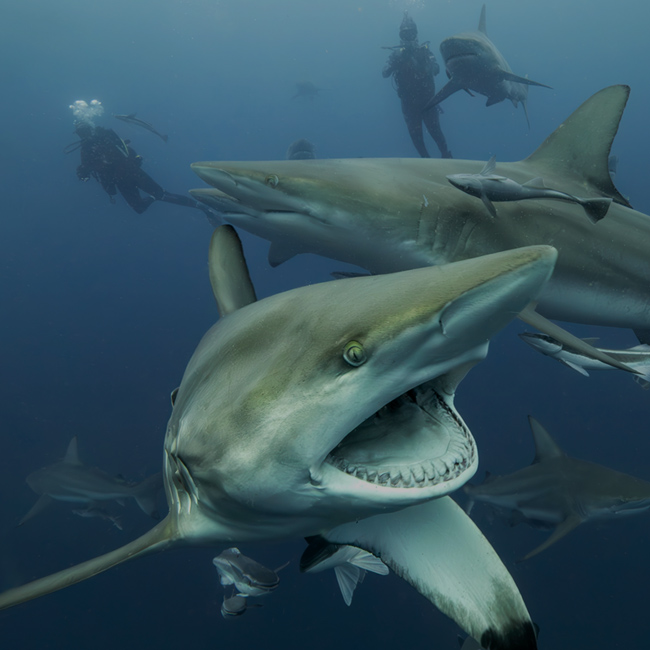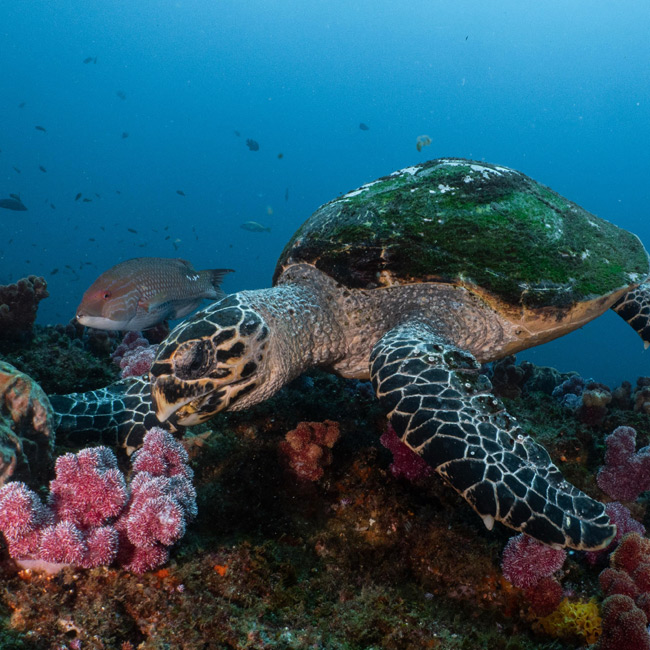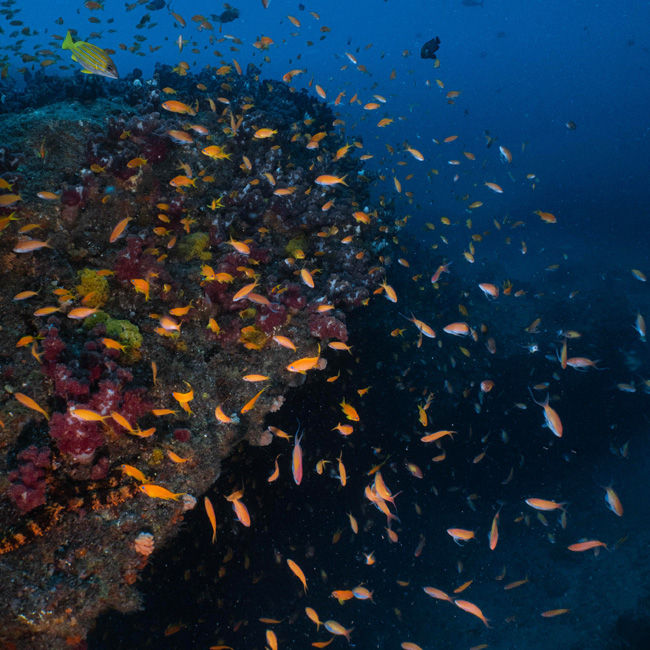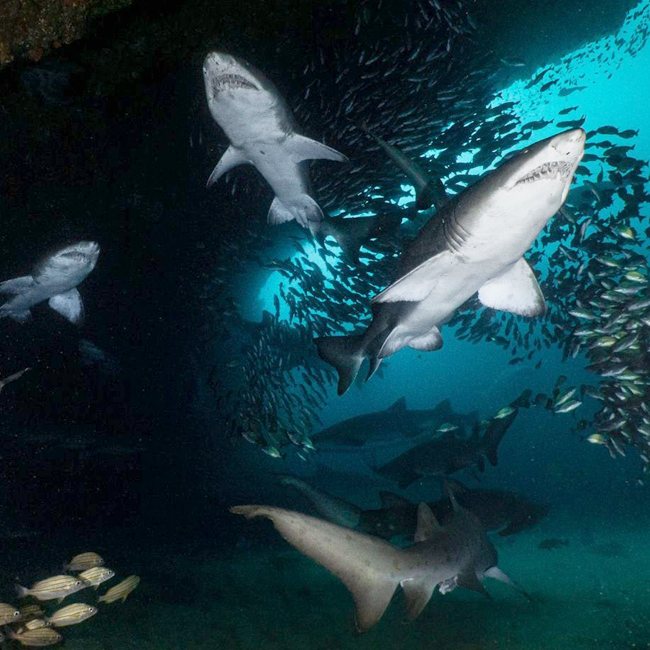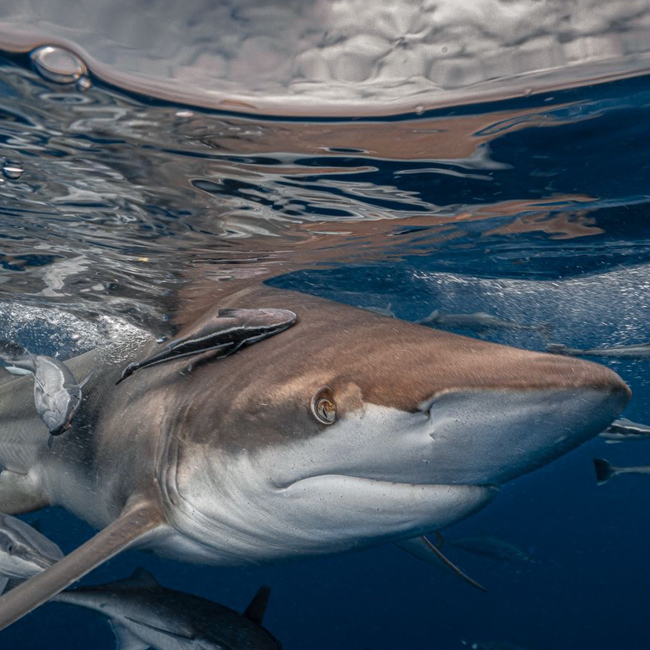The Produce
The Produce is an old cargo vessel that was reportedly carrying molasses. The Produce struck the Northern Pinnacles on Aliwal Shoal in 1974, while traveling from Durban. Thanks to a rescue party there were no lives lost as a launch from the Umkomaas River managed to reach her and saved everyone on board.
The produce is facing north and is a mere of 119m long. When she sank she landed on her starboard side and her back is broken, leaving her mid-ships very flat and scattered (she is facing the Umkomaas River). Her spare prop can be seen on her bow, although her propeller has been salvaged. The produce ship wreck a little way before the Shoal at a depth of approximately 32 meters. She sank in August 1974 and is hence a fairly new wreck, far more so than the Nebo. This dive can be the crowning jewel of the Aliwal.
The vessel is home to a host of Giant Brindle Bass, which are a fish that is about 3 metres long, and 1.5 metres wide. Harlequin Goldies can also be seen by divers all around the wreck; they are endemic to wrecks and can only be found on her and the Nebo at times. Scorpionfish are regularly found on wrecks, camouflaged and blended into the scenery. Manta rays and gamefish can also be spotted in the blue waters around the wreck, if the visibility allows it. The coral on this wreck consists more of soft coral than hard coral. Some of the Soft coral includes: fire coral, whip coral, green fern coral, polyp coral and yellow turret coral.
Beware though, this dive is a deep dive that can be complicated by high currents and poor visibility should the SAICCOR effluent be drifting over the wreck. It is also advised that you wear gloves when diving any wreck as the presence of Fire Coral can make a good dive a painful one should you accidentally touch this coral. The openings on the deck, can be quite strong and have been known to upset a lot of diver's buoyancy, so beware!
The wreck is in 3 sections on the sea bed, all of which can be dived on the same dive, provided conditions allow. The stern section is the largest of the three, with the smaller bow section lying some 20-30 meters in a northerly direction away from the stern; the third part is the centre of the boat. Both the stern and the bow are home to huge brindle bass.
There are about two swim-through's (one on the stern and one on the bow) for the more experienced and adventurous divers and it is advisable to take a torch on this dive as light does not penetrate all the swim-through's.

